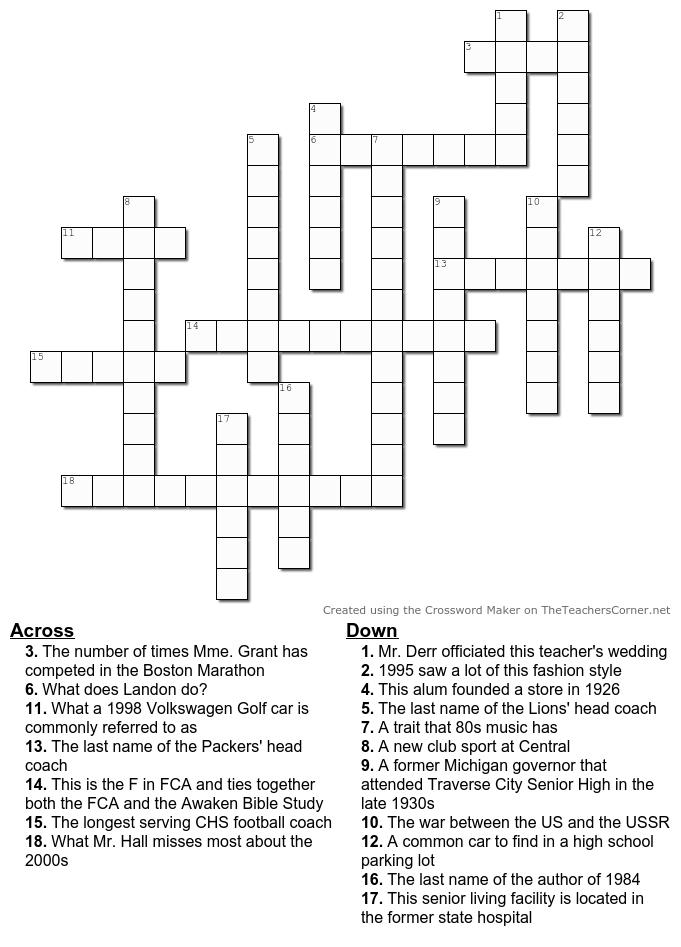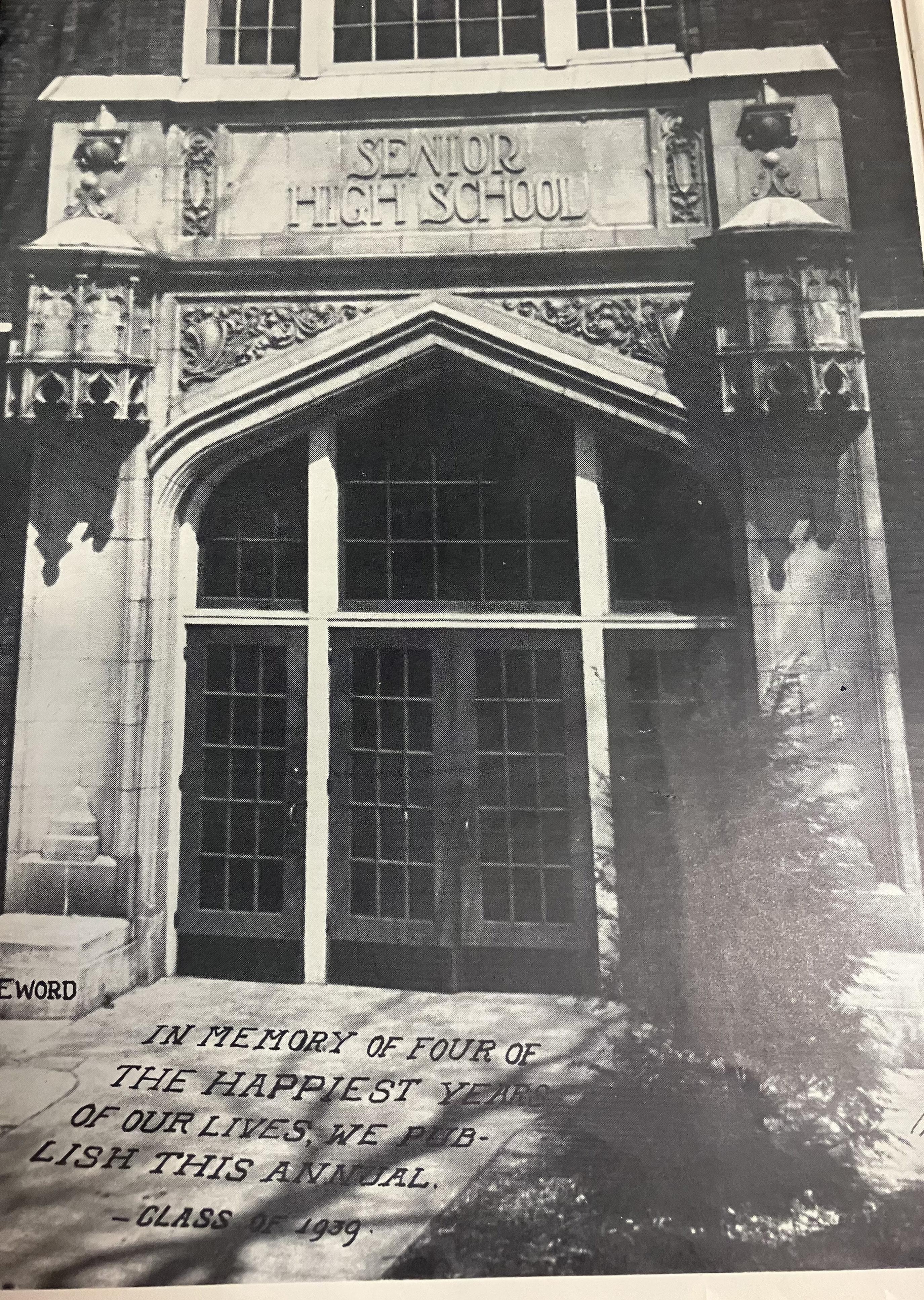

Black & Gold Quarterly
JANUARY TWO THOUSAND AND TWENTY FIVE
BGQ Staff
Editor-In-Chiefs
Eliana Hermel
Bridget Belden
Content Editors
Morgan Hill
Kailyn Groves
Staff Writers
Elaina Chippewa
Sean Humphrey
Jordan Teesdale
Leo McAvoy
Kaleb LaBarbera
Hailey Corpe
Parker Ziegler
Myah McCotter
Avaya Williams
Landon Willett
Finn Kennedy
Jade McGraw
Cover
Kaleb LaBarbera Adviser
Susan Roskelley
Send information, advertising, and other inquiries to:
Black & Gold Quarterly
Central High School
1150 Milliken Drive
Traverse City, MI 49686
Phone: (231) 933-6533
Email: roskellesu@tcaps. net
Editor's Note
When the two of us started planning out Issue 2, we agreed that there was no way this magazine would come out after January. We were absolutely driven to get it out, and we would have, had it not been for the fun printers who decided to give up on printing day. Now our beloved issue will be published in February, but we have decided to keep on our theme of the past by still calling it our January issue, so while it was written in the past, we’ll get to see it in the “future.”
With this issue’s creation spanning over the course of the end of one year and the beginning of another, we dedicated many of our stories to looking into the past, all varying from classic cars (pg. 18), to how war has affected students throughout time (pg. 24), to how fashion trends have evolved (pg. 12), to book bannings of old (pg. 16). We even have a story on how each wing office got their names with insight from our very own ‘Voice of the Trojans,’ Mr. John Sonneman (pg. 22)!
Along with these stories, we also have some miscellaneous topics: our new pickleball club (pg. 10), the intriguing hobbies of three Central teachers (pg. 26), and more. We won’t mention every story; you’ll just have to look through the magazine yourself! Upon looking through this unique issue, readers will also find the answers to our quarterly crossword puzzle within each of the stories. Additionally, don’t forget to check out our delectable wintry dessert we have for our recipe this issue: chocolate peppermint cookies.
We truly could not have created this without the help of our incredible staffers and our amazing adviser Ms. Roskelley. Our staffers’ writings are works of art, and we could not have asked for a better bunch. Issue two was an absolute blast, and we cannot wait to make another!
From the Pub, Eliana Hermel & Bridget Belden
By Landon Willett // Staff Writer
Landon Listens
The BGQ asked Central students about their New Year's Resolutions for 2025.
At the beginning of each year, students across our school are reflecting on their goals which align with their personal needs and aspirations for the upcoming twelve months. These goals range from personal growth to academic achievements, they also represent the want for change. The resolutions listed below showcase the ambitions of our students as they strive to better themselves.
[Iwantto]hitunrealon Fortnite. -EvanRemy'26
[To] get into a good routine with school/gym/extracurriculars.
- Margaret Haag '26
Toreadanewbookeach month. -IsabellaVanWagoner'25
[To]carelessaboutwhat peoplethink. -IsabelEspinoza'25
Iwanttobemoreboldin myfaithandbeoutgoing toleadpeopletowards Christ. -CarterBanton'25
ADVICE
We asked, you (sorta) responded. BGQ Editors in Chief Bridget Belden and Eliana Hermel (with special guest staff adviser Ms. Roskelley) attempt to answer the pressing questions of the Central student body.
What should I do if I can’t wake up on time? -Madelyn Reardon ‘26
Dear Madelyn, I set multiple alarms all within a few minutes of each other so I can make sure that I wake up. Sometimes I get sleepy when they go off, so the multiple alarms ensure that I remain conscious.
Sincerely, Eliana
P.S. Bridget says hi.
How to win in life? -Grady Rousse ‘26
Dear Grady, Follow my lead.
Sincerely, Ms. Roskelley
How do you win in fortnite battle royale? -Oliver Robinson ‘26
Dear Oliver, Shouldn’t you be doing AP Lang homework right now? And for the record, I use my Battle Pass to become unreal in Fortnite.
Sincerely, Ms. Roskelley
What
other
Dear Jack,
extracurriculars should I do? -Jack Lord ‘26
There’s a whole list of CHS clubs in your email, but the greatest of all is obviously BGQ.
Sincerely, Eliana
How does one get over the fear of changing? Or growing up? -Evelyn Darrow ‘25
Dear Evelyn,
In the midst of high school, change is scary, but important. Yes, you’re letting go of some things, but you’re also making way for new opportunities and passions. You’ll probably never stop being afraid of change, but you can learn to appreciate the new possibilities to come.
Sincerely, Bridget
What is the meaning of life? -Jacob Mastee ‘26
Dear Jacob, I know this is hard for you to understand, but the meaning of life is calculus.
Sincerely, Bridget
How do you recommend prepping for college? -Katherine Streza ‘26
Dear Katherine, Invest more time in AP classes because they look good on college applications and will prepare you for college. And if you do well enough on the exams, you will save money because you will get college credits.
Sincerely, Eliana
Bleeding Green and Gold
By Kailyn Groves // editor
For as long as I’ve lived, I’ve been a Green Bay Packers fan; I was born in Wisconsin, lived there practically my whole life, and had a single mother with the last name ‘Packer’. Coincidence or kismet?
When I finally moved to Michigan, it was difficult being a Packers fan in Detroit Lions territory, but I’ve finally managed to coexist with fans of different NFL teams. As a child, it might seem I only liked the team because I lived with devoted Packers, but as I grew older, I began to dig deeper into what it means to be a true Packers fan.
The Packers were established in 1919 and organized by a public franchise, making the Packers the only team in the NFL to be owned by its fans. They have over five million shares owned by approximately half a million stockholders. Assistant principal Brian Guiney has been a stockholder for the Green Bay Packers for three years. “In their [100 plus] years of history, they’ve done six stock sales,” Guiney explains, which means it’s difficult to obtain one. Besides having stock opportunities, their famous Lambeau Field stands in the epicenter of a residential neighborhood, a characteristic not shared by any other team.
It’s not all sunshine for the green and gold, though. After losing Aaron Rodgers in 2023, this began a series of losing key players from our successful team. Now with a young team, head coach Matt LaFleur promoted Jordan Love to the quarterback position as a starter. On March 11,
2024, Aaron Jones was released by the Packers after seven seasons and was rostered to the Minnesota Vikings.
Even after 105 years of consistent change within the team, the Packers have maintained their success rates. Prior to the Super Bowl, we won 13 championships. Many people may argue that winning streaks as well as standings in the NFL power rankings for the 2024 football season are what makes a team better than all the others. No one can argue with numbers; however, the Packers have the most wins in the history of any NFL team. Currently, Green Bay has captured 21 divisional titles, nine conference championships, and been to the playoffs 36 times. The Packers have recorded the most regular season games with 808 victories and the most overall victories (845) of any team, and are tied with the New England Patriots for the second most playoff wins at 37. As for the Lions, they have an all-time record of 591 wins, 707 losses, and 34 ties in the regular season, with an additional nine wins and 14 losses in the playoffs.
What makes the Packers the best? Some might say it’s our legacy or our undeniable winning streaks. For me, the best thing is the camaraderie. It’s how I connect with other people, especially my family. But you can’t deny how fun it is to win. “Some think we’re just some crazy cheeseheads,” my grandpa, Steven Packer, claims. “Others are just tired that we’ve won so much.” //
Bleeding Silver and Blue
By Elaina Chippewa // staff writer
Established in 1930, the Detroit Lions have surely faced trials and tribulations over the years, swarmed by countless doubters. After years of dedication, the Lions have finally become a force to be reckoned with—leading the NFC for much of the 2024 NFL season; they’ve even gone as far as clinching the first seed, having a regular season record of 15-2. It has been a long time coming, but the taste of sweet victory is finally within reach.
Opposers, without fail, will mention the teams’ history: how the Lions have never won a Super Bowl, their 2008 season record (0-16), or that other teams have proven to be superior—specifically, their division rivals, the Green Bay Packers, who hold a 106-78-7 record over the Lions. Despite the Lions’ somewhat dismal records, the introduction of head coach Dan Campbell in 2021 has opened doors to flourishment. With records of 9-8 (2022), 12-5 (2023), and 15-2 (2024), there is no doubt that the Lions have finally formed the “dream team.” The 2024 season has consisted of several key player injuries, including those of Aidan Hutchinson, Alex Anzalone, and Amon-Ra St. Brown, yet their grasp couldn’t be budged—ending the season tied with the reigning Super Bowl champions.
Many may focus only on determining a team’s worth by their records and history; however, other meaningful characteristics are vital to curating such an unparalleled team. One major factor is their initiatives and morals. In this department, the Detroit Lions are satiated. Their official website
reflects their mission to facilitate education and support for cancer patients and families. Additionally, they support veterans, current service members, and their families as part of the Salute to Service program. Retired Lions player Eric Hipple has even been nominated for the Salute to Service Award for his work ending the stigma of mental health among the troops. Whether as a team or as an individual, for illness or loss, the Lions community has never failed to be there in times of hardship.
Football is a huge fragment of American culture, but for many football has impacted their lives on a deeper level. Being a Lions fan has had its ups and downs but it has always been a way of connecting not only to those around me but to those across the world. Cheering on the Lions, seeing the smiles on the faces of my family, and jumping out of my chair when a score has been made will always be a precious memory for me. As for Henry Sullivan ‘26, he has been impacted in similar ways: “I have been [a fan] my whole life. Both of my parents are big fans. So I have been a fan for a long time,” he reminisces.
It is evident that one team has proven themselves time and time again: harnessing core values, demonstrating their GRIT and passion, but most importantly, caring for their community. Sullivan states that he is “glad to be a fan,” speaking for the countless Lions fans. The time has come to show the world who the Lions truly are. //
Pickleball Finds Its Home Between Class and The Court
by Landon Willett // staff writer
Central finally brings pickleball to its slate of club sports.
Pickleball may not be the first activity people think of when on the topic of sports, but it still has its fans. For those who are not familiar, pickleball is similar to tennis, but it’s played with a flat wooden paddle and a hollow plastic ball on a designated pickleball court, which is smaller than a typical tennis court. The game originated one summer in 1965 when founders Joel Pritchard and Bill Bell went to Pritchard’s home and noticed his family had nothing to do. The family’s boredom sparked the invention of pickleball with nothing but a tennis court, ping pong paddles and a plastic ball. Later, one of the co-inventors Barney McCallum joined in and helped create the rules for the game. From there, pickleball was refined and became popular all around the world with its popularity only growing since then, giving careers to famous pickleball players such as Collin Johns and Ben Johns, who are among the highest ranked athletes on the PPA Tour. Due to pickleball’s popularity, some students took notice of the sport and decided to establish the pickleball club here at Central this year.
The TCC pickleball club was founded
by Sofia Bird ‘26 and McKenna Wilcox ‘26. From the beginning, they had a clear vision that they wanted to create a club for other people who enjoyed pickleball. This idea stemmed from Summer ‘24 when they were playing a lot of pickleball in their freetime. “This summer, me and my friends were playing a lot of pickleball for fun, just to get out of the house, and we were all having a lot of fun with it, so we decided to make a club at the school where other people who enjoy it could come and play with their peers,” says Wilcox. Near the beginning of the school year, they set out this goal and accomplished it in late September of 2024. An Instagram for the club was made, and word got around about it and soon became popular with students. For those looking for a reason to join, Wilcox explains that “pickleball is just really fun. It doesn’t have to be serious if you don’t take it seriously, and it’s just a way to blow off some steam, and if you’re competitive, it’s a way to test your competitiveness. I think it’s definitely built a community where people can come and be accepted and even if they’re not coming with other people, they’re gonna have someone to play

with.” To become a member of the club, refer to the Instagram page or keep an eye out for posters around the school to stay updated on meetings that are coming up and where they take place. A $25 deposit is required to play at Pickle U - the team’s designated pickleball club practice placeduring the colder seasons. More players are very much welcome to the club.
The pickleball club couldn’t operate without the players; they give the club life and personality, drawing new members into their circle. The club and its players can teach students valuable lessons in leadership abilities, social skills, and a healthy way to spend their time. Members of the club regularly have tournaments and casual games during their scheduled meet times. In some tournaments, a rivalry takes place against Traverse City West High School, letting students showcase their school spirit. The pickleball club is an excellent way to make connections with other students who have similar interests. Additionally, the sport

is easily accessible and simple to learn for people who are not familiar with it. Dawson Payne ‘26, a member of the pickleball club, adds, “It’s pretty much just casual playing with your friends. It’s a great way to just get to know new people.” Payne encourages potential players, advising them to “Try something new. Something you probably haven’t done before. [Pickleball is] just a cool experience.”
It’s safe to say that pickleball has a huge impact on students at Central. Not only does it introduce some students to a dynamic and exciting sport, but it also creates an environment for people to come together and form everlasting bonds. The pickleball club has come a long way since its first game in September ‘24 and is continuing to change and evolve. For students, this club will have a lasting impression on them, teaching them valuable leadership skills and providing a new way to spend their time. This club has cemented itself as an essential part of CHS. //
Photo: @tccpickleballers
Photo: Lauren Smith
What Goes Around Comes Around
by Jordan Teesdale // staff writer
Teen fashion choices may seem linear, but they take notes from trends of the past.
While some trends make their resurgence decades later, high schoolers’ fashion has changed and evolved as beauty standards, the economy, and technology have all shifted over time. As these factors have evolved, so has the way teens express themselves through clothing. Tiffany Webb, a 2005 high school graduate, recalls “When I was in high school, I dressed sometimes in baggy pants and long tee shirts or pajama pants, and sometimes in long flowing skirts, like hippy style clothes, pretty similar to how kids dress today, actually,” Webb states.
Jennifer Eaton, who graduated in 1995, reflects on how alternative music shaped trends in her time. “I do remember a lot of Abercrombie and Fitch,” she states. “The way I dressed… Think of Kurt Cobain grunge on some days and Marilyn Manson goth on days when I had more energy. I used to wear fishnets under shorts with combat boots the first time it was cool.” Music and pop culture were pivotal in shaping the style of the 90s. Even as technology advanced, music continued to be a dominant influence.
Fashion in high school has always been a means of signaling their place in the social hierarchy, and clothing choices have long been associated with various cliques. “We had cliques of different kinds of kids that dressed differently. Like sporty kids who wore more polo-style shirts, punk rock kids who had mohawks and dressed in darker clothes and spike jewelry, and hippy kids who dressed like hippies,” Webb explains. What was once defined by music or social status, is now often influenced by social me-
dia and global culture.
Social media, television, and music videos continued to be key sources of fashion inspiration. “Things that influenced the way I dressed were music and the way musicians dressed in music videos and on MTV,” Webb recalls. The influence of MTV cannot be understated. Music videos from iconic pop stars, hip-hop artists, and rock and metal bands served as visual guides for how teens styled themselves.
Now, 20 years later, many trends that emerged in the 2000s are making a significant comeback among today’s high schoolers. “Since working at a high school, I would say past trends influence how kids dress,” Webb continues. “My daughter Maria has some clothes she just got for Christmas that look like baggy Lee brand jeans or Jnco-style pants… and I see a lot of kids wear band tee shirts—that [was] a big thing to wear when I was in school, too.” This reflection by Webb shows just how repetitive fashion can be. Mixing nostalgic styles with modern trends allows today’s high schoolers to reinterpret the past in fresh and unique ways. Eaton agrees with this sentiment. “Absolutely, the past is still influencing today… My parents could say the same,” she remarks. This repeating nature of fashion is not a new phenomenon.
The constant blending of past and present has created a unique mix of classic and contemporary styles among today’s high school students. With every generation borrowing from the previous ones, teen fashion continues to evolve while still carrying the influence of prior decades. //
How would you describe your style?
“I’m not really sure. It’s just a hodge-podge of everything that I enjoy,” - Luella Killian Welch ‘25
“Kind of a mix of styles, very eclectic. I wear some goth outfits. Sometimes I go for 70’s, sometimes it’s grunge. Whenever it’s casual, I just throw stuff on,” - Molly Carrigan ‘25
“Dark, but not in the edgy way. More of just I wear all black,”Gray Dungjen ‘26
Where do you get inspiration for your style?
“I really like older magazines, layering, and lots of music artists and whatnot for [my] day to day style. I love Strawberry Switchblade, [too]. Any time I have to dress up for anything fancy that is 100% my inspiration for it in every way,” - Killian-Welch
“The 80’s and 90’s. I like old goth and old Hollywood. I [also] think vintage is really cool,” - Carrigan
“A lot of bands I listen to, and their members. Some TV shows, too,” - Dungjen
What does fashion mean to you?
“I buy almost everything secondhand from a variety of places like thrift stores or consignment stores. If I’m looking for something specific I’ll buy it online or I’ll just take stuff from my friends,”Killian-Welch
“It’s just a way to express yourself and show your interests. I listen to a lot of old music and I like to do a lot of creative things like drawing. I feel like that reflects my style,” - Carrigan
“It’s another way I just like to express myself. Like dying my hair or my clothes. Something like that,” - Dungjen
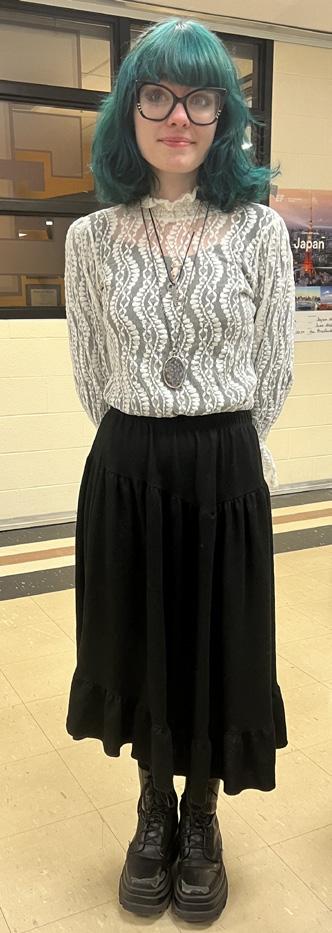
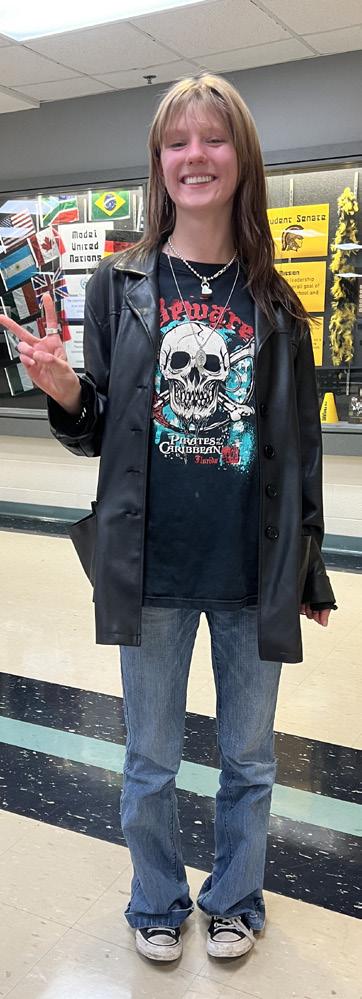
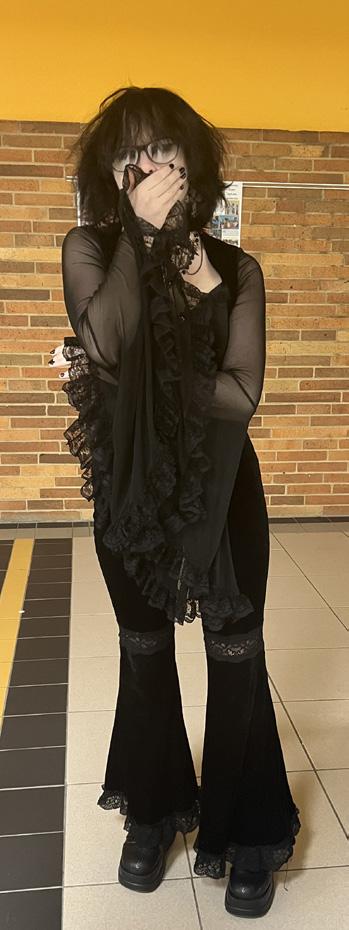
Photo: L. Killian-Welch
Photo: M. Carrigan
Photo: G. Dungjen
Ent ErtainmEnt of the Past
Reconnecting with the Past through music, tV, etc., and PErsonal accounts of how the EntertainmEnt industry has impacted lives.
By Leo mcavoy // staff Writer
Walking around anywhere in the world, people wearing headphones is a familiar sight, but what are they listening to? From rock to rap to Renee Rapp, keeping up with the newest releases brings people together. In a world dominated by AirPods and music streaming services, anyone can listen to music that caters to their current mood and personal tastes, no matter if a song was released fifty years ago or fifty seconds ago.
Music genres have multiplied and evolved quite significantly in a minimal amount of time. Even in the last few decades, many different trends have emerged, with specific traits appearing more with the loss of others. The 80s had synthesizers, the 90s had raw-sounding angst, the 2000s had electronic pop, experimental psychedelic rock, and so on. With new sounds emerging seemingly every year, the willingness to explore different music styles has been greatly widened in much of the world’s population.
Now in the modern day, music or enter-
tainment stores like FYE have become more and more forgotten, but thankfully, they still stand. Regardless of not yet being extinct, it simply isn’t the same as it was even less than a decade ago, especially in the case of our local location. For years, it was managed by the same people, with roughly the same customer base coming and going, then returning once more. Nowadays though, all of the original staff are gone as of two years ago, and it’s quite sad looking back and realizing it won’t be the same again.
Tom Schmitt, former manager of FYE of 30 years, reminisces back on his time being a part of his work family.
“When I got in there, it was half cassettes, half CDs. Vinyl had already kind of exited, and then…everybody was replacing their vinyl and their cassettes,” he recalls. After he arrived, Schmitt was part of the transformation of FYE from a simple music store to a local gathering place. “CDs became so popular, and I just enjoyed that atmosphere. We would have artists come and
play and sign, and then it just developed a great staff and…we were like ‘This is family,’” Schmitt reflects. He also expresses his discontentment with the current state of our local FYE as a whole — all different staff, different primary musical interests, and “lack of passion” for songs that are now considered “oldies”.
There are quite a few other expressions of music that differ from typical listening.
One small example… DJing. Being a DJ allows you to express yourself and watch others express themselves at the same time, being the one to pick the music and getting to watch people simply have the time of their lives dancing and singing to whatever songs you may happen to play.
““In addition to playing lots of great tunes, it is just awesome seeing people cut loose and have a great time celebrating with each other,” expresses local musician and DJ Jody Kluck. Oftentimes when people are put in a free, energetic public space such as a dance or wedding, they’ll feel more comfortable show- ing their true colours, which is something that would let others around them feel the same way. To many, music can be a form of bonding, a gateway to feeling more like themselves.
“The music we play and the lights and atmosphere we create goes a long way to helping make those memories last a lifetime for
the wedding party and guests.”
To older generations, watching the rapid shift in popular music styles must come with some difficulty, but knowing that a populous young demographic still enjoys their music likely brings immense joy. Regardless of how different it may be now, anyone of any age is equally capable of learning to love more modern tunes. The same goes for movies, video games, books, and even fashion. “I used to limit myself to a few genres but both working at FYE and being open to new suggestions and listening to recommendations has led me to discover so much incredible music that I don’t think I would have found on my own,” Kluck concludes. Times may be changing, but talent certainly isn’t fading. //
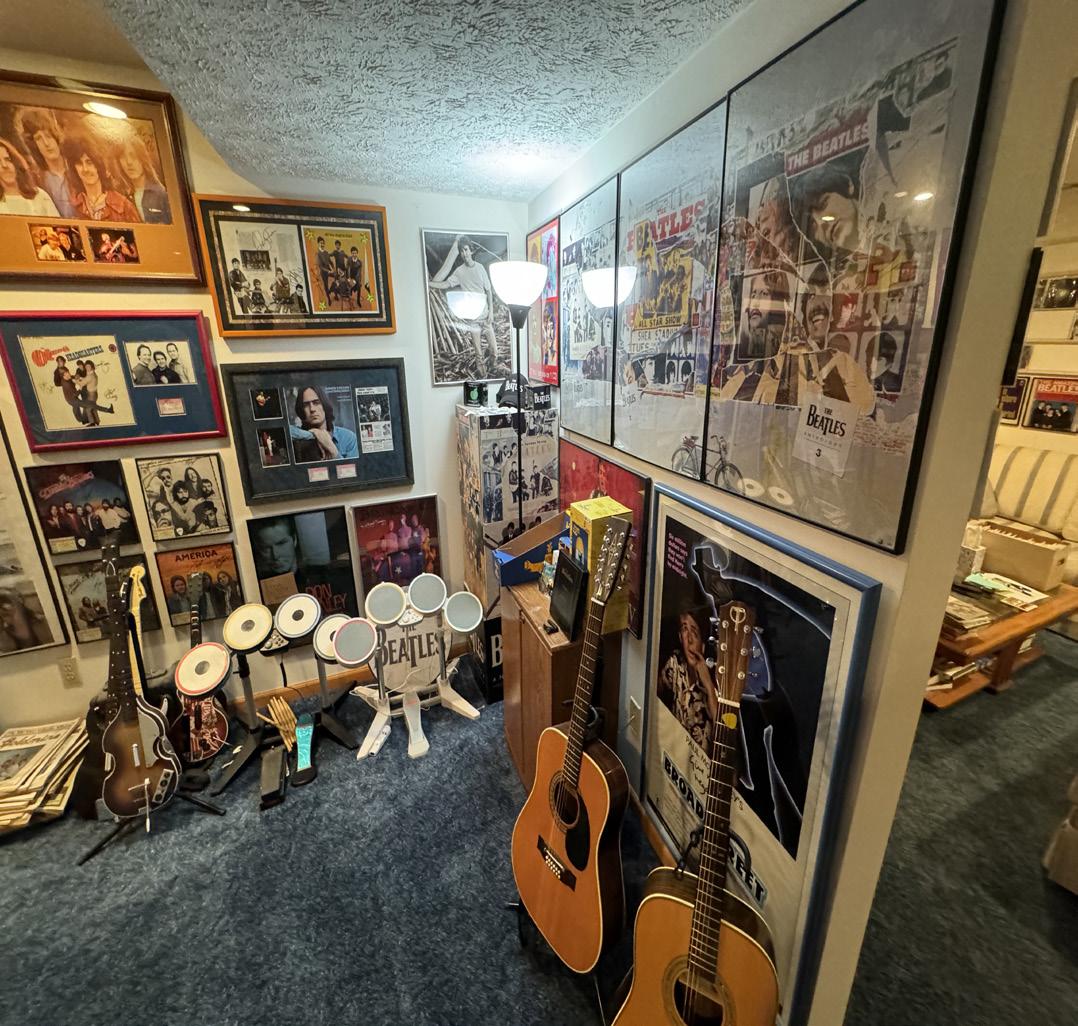
Photo Courtesy L. McAvoy


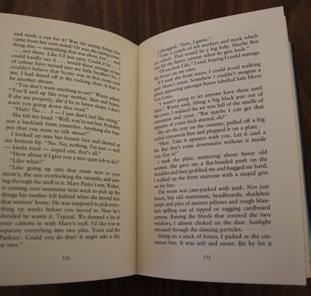
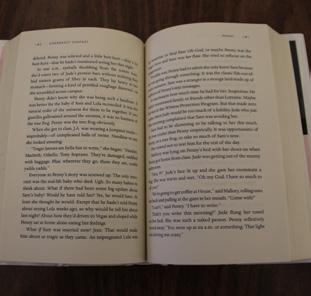

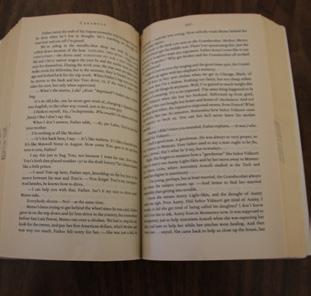
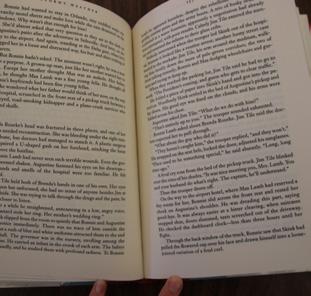
Pu T T I N G Boo K S oN T H E S T A N D
By Parker Ziegler Staff Writer




Over the past few years, there has been a dramatic rise in book bans across the country, especially in more southern states such as Texas and Florida. But why should we, in Northern Michigan, care about issues that seem to not affect us? While Traverse City has not faced any actual book bans, there have been a few book challenges over the last couple of years, but only two of the challenged books made it to the committee review level. In both cases, the committee decided that the challenged books were age appropriate and should not be removed from school shelves. Even if it may seem like Michigan has escaped the issue of book banning, that’s simply not the case. There are districts in Michigan, particularly in the East and West parts of the state, that have faced a slew of challenges recently.
How exactly a book is banned in schools can seem confusing, but it’s pretty straightforward. In our district, community members have the right to challenge any book in the school libraries. They have to fill out a form that goes to the school librarian, who will then set up a meeting, normally
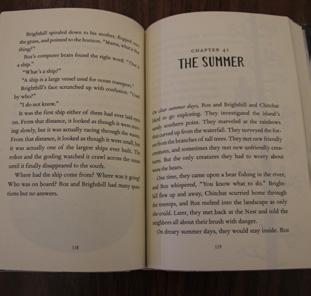

The topic of book banning has skyrocketed in popularity, but how often are these challenges occurring?
with the principal involved or present. If no outcome is agreed upon by both parties, the challenger can ask for a committee review, where a separate group will review the book and then give a recommendation to the school board.
Some of the most commonly challenged books feature people of color or LGBTQ characters. For many books being banned, especially ones with LGBTQ characters, the reason given is that these stories are not “appropriate for young readers” or are too “sexually explicit.” Unfortunately, books don’t have a set standard like movies, which leaves it to parents to decide its appropriateness. But, when a book is taken off a school shelf, it’s banned for all students, which can be unfair to other children. The long term consequences of restrictive book bans may not be initially obvious, but they are there. It’s important for children to see themselves in the books they read. “I think that reading literature gives kids perspectives on both their own experiences and then experiences that are different from theirs. And when you’re a kid, kids live in a pretty sheltered environment,” notes teach-
er librarian Larissa VanderZee. “In your school, sometimes you don’t have access to these experiences that other kids do. So books allow a lot more exposure to different perspectives, different opinions, different beliefs, different actual lives that we wouldn’t maybe even know about.”
One of the most famous and early examples of a book ban is Uncle Tom’s Cabin, written in the late 1800’s about an enslaved man named Uncle Tom. While the book became pretty popular in the northern more pro-abolition states, in more southern states the book was banned because it was “untruthful” and painted southern states in a “bad light.” An additional example of past book bannings would be the Scopes Monkey Trial of 1925. Around this time, the theory of evolution was beginning to be taught in schools as a fact rather than a theory. For some conservatives at the time, this was an issue because they believed in the theory of creationism, in which God created the universe and everything in it. They wanted biology textbooks to talk about both the theory of evolution and creationism equally.
A more tragic example of book banning would be when the Nazis began book burnings during WWII. “One of the things [the Nazis] wanted was to create a… pure Aryan culture. What they did is they went after everything that they considered anti-German or corrupt as they would call it. … it wasn’t just Jews, it was anything they considered decadent or anti-Aryan,” explains Central history teacher Joseph Forlenza. “The most famous are the book burnings because kids would empty out the libraries, their schools, [and] their communities, and build these big bonfires and then burn books because it’s a very visible visceral thing.” Later on, during the Cold
War, US citizens were told by the government to be very fearful of the Soviet Union and the nuclear missiles they possessed. Joseph McCarthy, a Wisconsin senator, took advantage of the rising levels of fear to further push his censorship campaign. McCarthy and his followers mobilized to ban books by authors he considered to be Communist, with some of his followers participating in massive book burning bonfires. Young adult books mostly evaded the bans because of McCarthy’s search for Communism in nonfiction literature.
All this being said, there should be age restrictions on what students can read in school libraries, especially in schools with a wide age range of students. Obviously, elementary schoolers shouldn’t be allowed to read books like One Flew Over the Cuckoo’s Nest due to its graphic and mature content. “[It’s] really graphic and kind of brutal,” comments Bea Plum ‘25. “Some parts of it were disgusting, the same with 1984 by George Orwell. I feel like I’ve read a lot of mature books that young kids should not read.” Schools also have to take into consideration kids’ reading levels, as most elementary and middle schoolers aren’t at the reading or maturity level to be able to comprehend books that often end up on the banned lists. “The only scenario where I would consider banning a book is if a book is super violent or graphic that [is] for elementary or middle school kids, because I feel like they shouldn’t be exposed to really super graphic or sexual stuff when they’re that young,” Plum concludes. “I think a lot of people would agree that’s just not what we do in our society. That would be the only reason...I think people should be able to read whatever they want.”//
Maintaining Motors
Three students’ stories on their not-so-new cars and the lengths they go for them.
By Sean Humphrey // Staff Writer
KANNON BAKer ‘25
1998 VW GOLF
“You know the ChrisFix triangle? Fast, reliable, cheap? You can only pick two of them,” Kannon Baker comments. “I picked fast and cheap.” Baker’s car - a 1998 Volkswagen Golf, commonly referred to as a MkII - often gives him a run for his money; towards the end of last school year, the exhaust headers fell out of the engine block entirely, creating a spectacle in the parking lot.

“People don’t really like when it’s especially loud,” he says. Baker used this as a catalyst to modify the exhaust system and purchased an equal length long tube header.
Besides the exhaust modification, it’s also lowered and has a quick-release steering wheel, which gave Baker quite the fight when he replaced the steering and ignition assemblies. “I had to replace the ignition switch, and I had to order this special bearing splitter tool. I had to…take the steering wheel off, [then the] steering column, and then use this puller tool to get it off the splines. Then the whole ignition assembly would slide off of there, and you’d have to unscrew it and put it in. Once I actually got the tool, it took me all day,” Baker recounts.
Anyone who does work on cars knows that any non-original modifications will affect car performance. Baker’s Golf is no different, giving him plenty of trouble with any level of maintenance. “[It was] extremely inconsistent. It seems like every time I would change the oil, I would have to let the key sit in accessory mode for about 30 minutes before it would start…Or, if you mess with the electronics, it’ll start honking and go crazy. The doors will start locking and unlocking,” he recalls. All of this work came at a cost to the car, which, as of right now, is not running and is instead in storage.
“[It threw] eleven codes, such as vacuum leaks and a cylinder 6 misfire. So I checked the coil packs and the plug wires, and they’re all good and they’re sparking. But where the actual spark plugs sit, it’s like there’s a lot of oil in there,” he elaborates. Although the car is not currently scooting through Central’s lots, Baker hopes to get it back on the road soon. //
Photo Courtesy K. Baker
Kostas Tsoukalas ‘25
1977 Mercury Grand Marquis
Every high school parking lot has its stand-out members; the teacher with the old muscle car, the students with the brand new Teslas, the pickup truck crew, and so on. Kostas Tsoukalas is no exception with his bright orange 1977 Mercury Grand Marquis. The 19 foot long car stands out as one of the biggest and most unique vehicles in Central’s lot. It comes with few modern features but a unique story to make up for them.
“It’s actually kind of a spite against my dad,” he admits. “I’ve always been interested in big body cars and old luxury sedans [4 door cars]. I looked at a Lexus LS400 from the nineties, [as well as] some other less muscular muscle cars like a Monte Carlo. My dad kept saying no to all of these, and he said, ‘You don’t have the money to get this car yet.’ I tried to pay up and tell him I would put down the $5000 and then this car came up for $5500. I had just over that amount of money, and I told him, ‘you said no to everything. I want this car. I have the money to get this car. I’m going to buy this car.’ Unfortunately for him, I ended up buying the car.” He says that looking back, it might not have been the most practical choice, considering it’s a rear wheel drive car with none of the modern safety features that any even semi-recent car has, but he has no intention on selling the car anytime soon. //
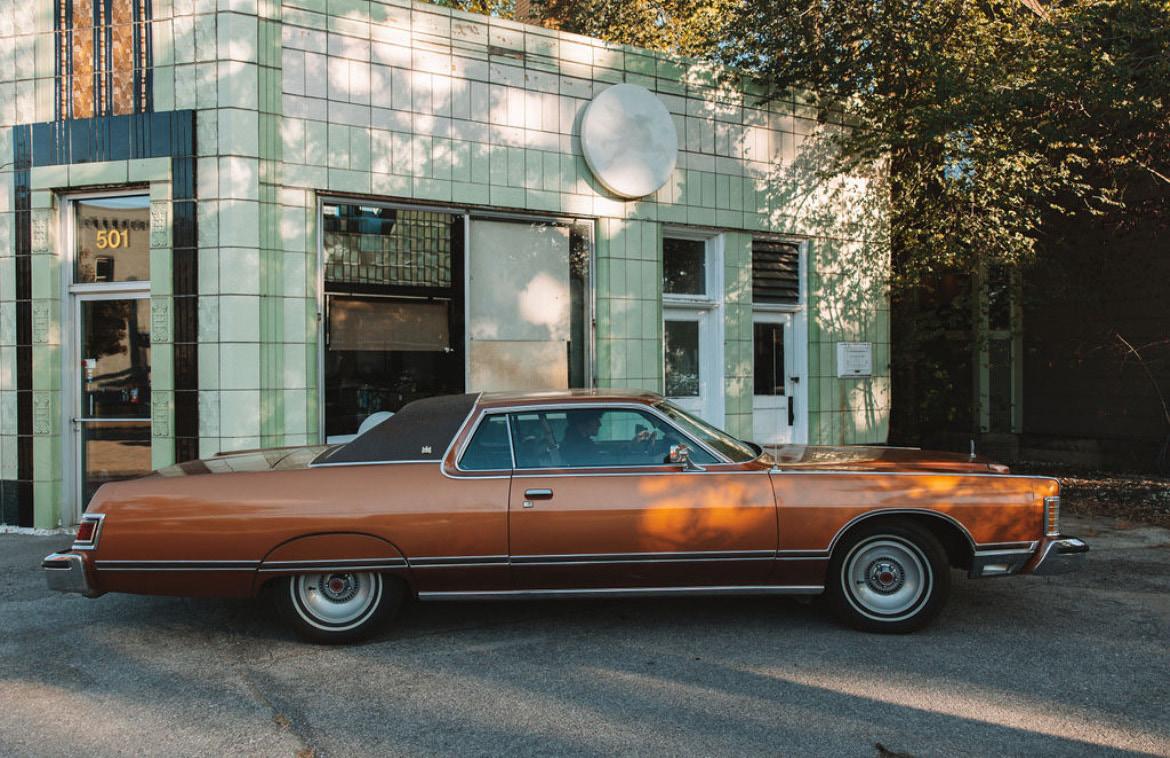
Subarus are a common car found in high school parking lots, and with good reason: they’re good on gas, comfy, and have AllWheel Drive. But few look or sound as good as Cameron Smith’s 2004 Subaru Legacy GT sedan. With a turbo, tune, and custom stainless steel exhaust built by himself, Smith’s Subaru is one of the best sounding cars at Central.
“When I bought the car, my throttle body was messed up, but I just cleaned it off and it works perfectly fine,” Smith recalls. “It threw this code that wouldn’t allow the air intake system to open properly because it comes with a system…[that] open[s] and close[s] like a pair of butterfly wings with more throttle.” Smith also makes sure to share his wealth of skill and knowledge with others, often assisting other students with their cars.

“I’ve learned that not everybody knows the same things that I do. I grew up around cars, [because of] my grandpa. He has his own race truck and he builds these big and small block V8s. So I wanted to expand into my own culture. I wanted to understand Subarus and the Japanese domestic market,” Smith states proudly. “I feel like I just really love teaching people how to do things. And when people come to me and ask me how to do things, it brings me joy.” //
Photo Courtesy C. Smith
Cameron Smith ‘25
Photo Courtesy K. Tsoukalas
Generations of Teens: A Central Story
In just a few short years a lot can change - the early 2000’s up until now has brought rapid developments in many aspects of a teenager’s life.
Years come and go, some things remain and some things change; however, the past will always be relevant. Central’s faculty comprises several TCAPS school alumni whose experiences consisted of many differences—with some exceptions—to the students’ lives today. The passing of time alters the way of life but no matter what, generations have found a path to making their high school experience unique and prosperous.
The typical social scene of high school students has surely evolved over the years. For Central history teacher Paige Paul ‘00, her after-school activities may have been primarily stereotypical: clubs, sporting events, and participating in sports. Although, there is one major peculiarity that enormously altered her views of high schoolers across the nation—rivalry. “My sophomore year [was] the year West was [supposed to be] finished…the problem was, they were behind schedule…we had classes in trailers because both West and Central students and teachers were here… [leading to about] eight-hundred students per grade,” Paul explains. “So, the West versus Central rivalry feels different to me. Being in the same school as some of those kids, you really got to know them.”
As for Central math teacher Collin Hall ‘08, an alumni of Traverse City West (al-
By Elaina Chippewa // Staff Writer
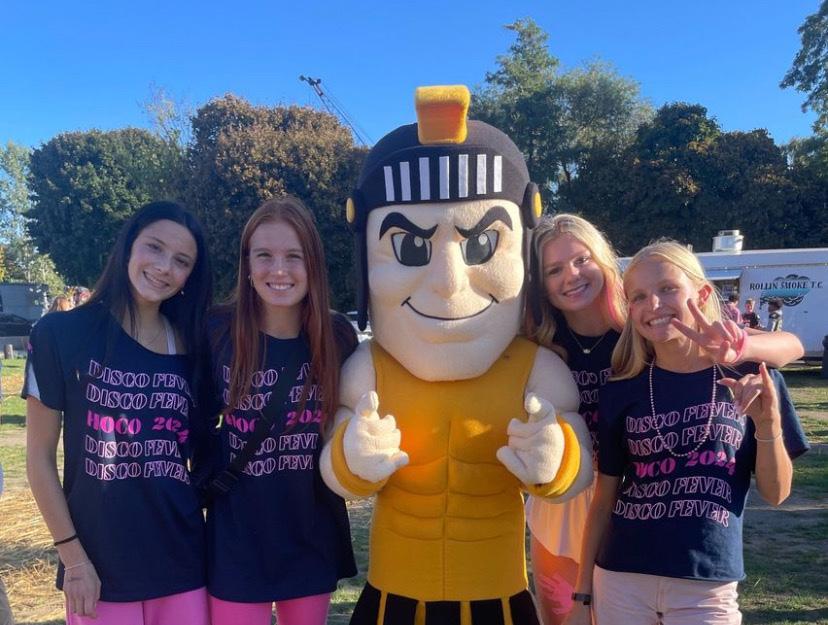
though after the new building was completed), he took a more chill approach to the social scene: “I hung out with friends, went to each other’s houses, played video games online…[and I would also go to] football games and stuff too…[all while] working jobs,” he mentions.
Although having a social circle is a great foundation, hanging out in the same place may become a little repetitive. Traverse City has gone through changes over the years, yet there have always been “hotspots” for spending time with friends. “We had two malls at that time, so we would walk around the mall…we also spent a lot of our time going to school events like sporting events and go cheer on if we weren’t playing ourselves,” Paul reflects. She doesn’t remember too many places that teenagers could go to hang out, but they made the best of what they had. Hall reminisces about a different kind of hangout spot: fast food chains, and the demise of their dollar menus. “Now the dollar menu [is] not [really] a thing anymore, and it’s kind of depressing,” he laments. Today, there are endless possibilities when deciding what to do; however, Sienna
Photo Courtesy S. Cobb

Cobb ‘26 reveals that she and her friends “go downtown a lot,” as even downtown is packed with enough options to satisfy one’s adventure.
Without a doubt, one of the most influential distinctions between the generations is…technology! Both Paul and Hall recall technology as being the biggest difference between school life in previous years and now. Paul remembers having a computer lab; “It was a special privilege to be able to go to the computer lab…my research was done in books…everything was done [with] pencil, paper, [and] books, and computers were this newer school resource that we could use [and] nobody had a cell phone,” she recalls. Just between the years 2000 and 2008, quite a bit had changed in the technological universe—Hall, along with many of his classmates, were in possession of “a flip phone, [specifically] a Motorola Razr,” one step closer to today; still they weren’t allowed to have them at school, and teenagers’ connections to their peers and their phones is significantly different. In the present, Cobb speaks for the current generation: “I use [technology] a lot to communicate for the clubs I am in and with my friends. I [also] use it a lot for schoolwork. Nowadays, it is all on our computer,” she notes.
Going hand in hand with technology is the expansion of the music industry throughout the years. Music is a massive
part of peoples’ lives, for teenagers especially. New artists and bands seem to be making billboards on a daily basis. Paul’s experience with music and pop culture consisted greatly of boy bands; along with the time-frame being “on the edge of the grunge era,” musical artists such as Nirvana were a huge deal, too. In Hall’s era, he calls to mind listening to “punk rock and screamo” music—one of his favorite bands being MayDay Parade. Cobb’s taste is more aligned with pop music, with Gracie Abrams being one of her favorite artists. Music has always been a way to express yourself and as time has passed, the growth of the industry has only made it easier.
Years bring change, especially when it comes to a day in the life of a high school student. Despite the quarter of a century that spans across the experiences of Paul, Hall, and Cobb, they all had positive high school journeys, although Hall does wish that he could have done some things differently: “[In] most classes, I was just the quiet kid that didn’t say much. And then if I had friends in class, I would be a little bit louder and joke around more…So I feel like I could have used high school a lot better than I did,” he remarks. Regardless, high school is a time for growth, and Hall (as well as Paul) both hope that their students will embrace the social opportunities that await them at Central today. //
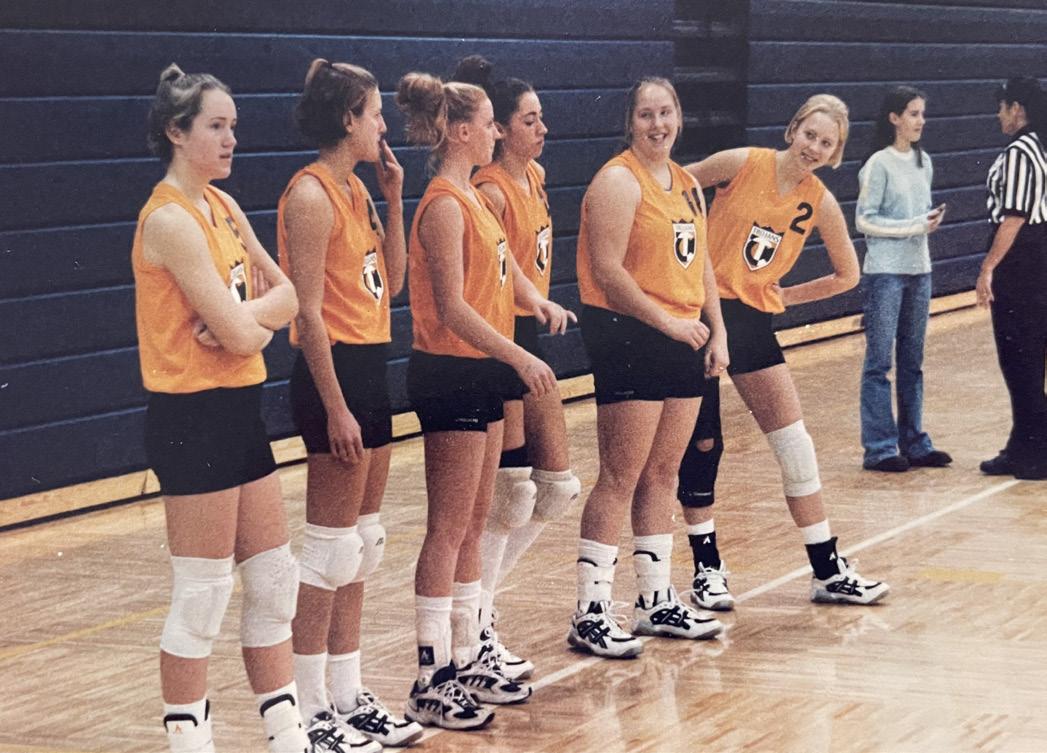
Photo Courtesy of C. Hall
Photo Courtesy P. Paul

The lasting impact of Milliken, Oleson, and Ooley goes beyond the wing offices.
By Morgan Hill / Content Editor
It’s a typical day in AP Euro. Joe Flo is lecturing about King Henry VIII and his endless wives when his phone rings. Principal Johnson’s assistant Mrs. Kennedy is calling, asking you to come to the Oleson office. Your first thought? “Where the heck is the Oleson office?”
For decades, the three wing offices at Central were only known by their location: Upper C, Lower C, and F Building. Over the past few years, they were renamed after significant people in Central’s long history, which has created significant confusion amongst the student body whenever they are called out to the Milliken, Ooley, and Oleson offices. Not many are aware of the stories behind these individuals and why Central opted to memorialize them.
The Ooley Office was named after a very popular football coach that held the record for the longest time served as head coach of Central’s football program. “[Coach James R. Ooley was] huge in developing the football program,” according to Athletic Office administrative assistant Patricia Bowen, who has worked at Central since the 90s.“[Jim was honored] because he was just with the program for so long. [Typically,] coaches last for five [or] six years, [but] he was [with us for] a long time.” TCAPS Athletics Announcer and former Central Athletic Director John Sonneman explains that “Jim became the head coach in 1967...
He coached until 1991 [after] 243 games, and out of those, there were 179 wins, 60 losses, and four ties back in the day when we didn’t have the tiebreaker.” Sonneman knew Ooley in the latter stages of his career while working as Central’s Athletic Director. “He was a much beloved person… [and] he was a noticeable person on the sidelines,” Sonneman recalls. “On the football field, he took no guff, but he got results…with people who aren’t the giants that you have playing football in some places today. [On] his team, [for] one of the first state championship teams, the line probably averaged around 165 or 170 pounds… [and] his teams won three state championships the day they appeared.” Ooley was also influential in arranging football playoffs for Michigan high schools and was a member of the MHSAA, the MHSFCA (the football coaches association), and was a biology teacher at Central, famous for “showing [football] movies in his classes,” according to Sonneman. Ooley also set up a scholarship opportunity that is still offered by his foundation to this day. Ooley died in 2005 after a long career in TCAPS but is remembered for his efficiency as well as his humor. “[Ooley] said, ‘If you’re playing soccer, you’re playing with some funny ball that bounces different,’” laughs Sonneman. “He thought a round soccer ball was a strange shape. He said the only good shaped ball was a football.”
Michigan Governor William G. Milliken takes the Upper C office. Milliken attended Central in the late 1930s and early 1940s. He was a member of the state champion basketball team in 1941, which is captured in a photo that is still kept next to the athletic office. “[Milliken] went on to become lieutenant governor of Michigan. He was a state senator and was the lieutenant governor for Governor Romney, and then when Romney was elevated into the cabinet of Richard Nixon, he became the governor of the state of Michigan,” explains Sonneman. “He was the longest serving governor in the state, and he was known for his ability to get along with both Democrats and Republicans.” Milliken was also responsible for starting a department store - Milliken’s - in Traverse City that has only recently closed down, but was considered a “landmark of downtown Traverse City” according to Sonneman. Adding to his honors, “Milliken and Ooley were in that first class that were inducted into our Hall of Fame.” Milliken wasn’t just honored in the office name. “The street [next to the school] is named after him, too. Milliken Drive,” adds Sonneman. ”Milliken was a favorite. I would call him a favorite son of Traverse City. I met him a couple of times. He used to come and walk the Civic Center, and every so often you’d meet Bill Milliken out there having a walk. This was after he retired and was living back here.” After a long political and influential life, Milliken died in 2019.
Gerald W. Oleson represents Oleson Office for his heavy contribution and donations in the TCAPS community, directly benefiting Central. Oleson is well known for founding Oleson’s Food Stores, initially on Front Street in 1926. “He was a 1925 graduate [at Central], and he went on to

found the grocery store, where he greeted customers with, ‘Hello young man or young lady, come on in, the water’s fine,’” recounts Sonneman. Oleson owned one of the biggest buffalo farms in Northern Michigan - hence Oleson’s buffalo logo. Oleson was honored primarily for his generosity, donating a large amount of money to TCAPS and the community. “What I’ll say about Gerald Oleson is he’s renowned for his generosity [and] his giving,” explains Sonneman. “The Oleson foundation was formed and continues to give generously to all kinds of projects and things in the city. Gerald Oleson and his sons are the ones that contributed a huge amount to the refurbishing of Thirlby Field… to make it possible for the press box and the synthetic turf. [Oleson] was named Traverse City Citizen of the year in 1954 and was one of the founders of the Northwestern Michigan College [along with Les] Biederman. The Oleson Foundation [also] provided all the food for the annual NMC barbecue.” Oleson died in 1997, survived by his many relatives and his grocery store that continued to expand.
Among Oleson’s greatest quotes was, “We make a living by what we get, but we make a life by what we give.” Clearly, these three individuals - all inductees of Central’s Hall of Fame - lived out this idea fully, and our community is better for it. //
Photo Courtesy K. Groves
The Next Chapter
How historical conflicts continue to shape the US and our community.
By Kaleb LaBarbera // Staff Writer
We talk about historical events that shaped our world in class. But it is horrifyingly often that people forget that history is still being written and what has happened before can happen again. To take the correct steps forward, we must remember the steps taken before us.
In the past, the world was much different. Society had different norms and ways of speech, technology was less advanced, and massive social gatherings were more popular. At a larger scale, countries and borders were sometimes unrecognizable to their modern-day counterparts. The historical events that changed those borders were primarily wars. At the front lines of those conflicts were often older teenagers and those getting out of high school.
Wars have greatly shaped the world. Central history teacher Jeffrey Glikman explains that during the Cold War, the U.S both funded and participated directly in conflict because it “tried to use its influence to either protect its interest [in] capitalism, democracy, or to shape [the world].” America’s involvement or creation of world conflicts during the atomic age greatly impacted many people across the globe. Regular people get caught up in things far bigger than themselves. Way too often, people who are in the midst of proxy wars
suffer at the whims of the global powers. From his own firsthand experience while in other countries, Glickman has “met people who were maimed by landmines, caught in the crossfire who lost family,” seeing for himself how global conflict has cost countless lives while also shaping the world we walk today. Countries have risen up and expanded their lands and gained resources through imperialism, while others collapsed under their own weight or from the force of larger nations. Some conflicts were unnecessary and fought without need. In these conflicts, some stood to try and stop more losses of life from occurring.
During the Vietnam War, many stood against the conflict. Objectors saw it as a needless war and wanted it to end after it became clear that an armistice to the war would not be approaching soon. Protest songs such as “Fortunate Son” by Creedence Clearwater Revival and peaceful demonstrations against the war rose in popularity during this time. This war was also especially despised due to the draft. As a result of the protests, however, soldiers of the conflict were treated with little respect, if any, as Traverse City Historical Society member Nancy Bordine expresses: “There was much more outcry against it,
and young men dreaded getting drafted, and when they came home, they were definitely not celebrated. They were spit on and worse things when they came home… people shouted ‘baby killer’ at them.” This, however, was not the only protest against an American war. During the 2000s, America invaded the nation of Iraq, which was led by dictator Saddam Hussein. The U.S invaded Iraq due to claims that weapons of mass destruction were in possession of Saddam Hussein. These claims lacked evidence and ended up being false. Many were outraged as they saw the war being an excuse to invade and that it was mostly harmful to the region. Similar to the Vietnam War, protest music also spread across the U.S., such as Green Day’s American Idiot album. Opponents of the war did not see this conflict as a noble one, which was shared by many who saw the conflict first hand as well as others in the American pop culture scene.
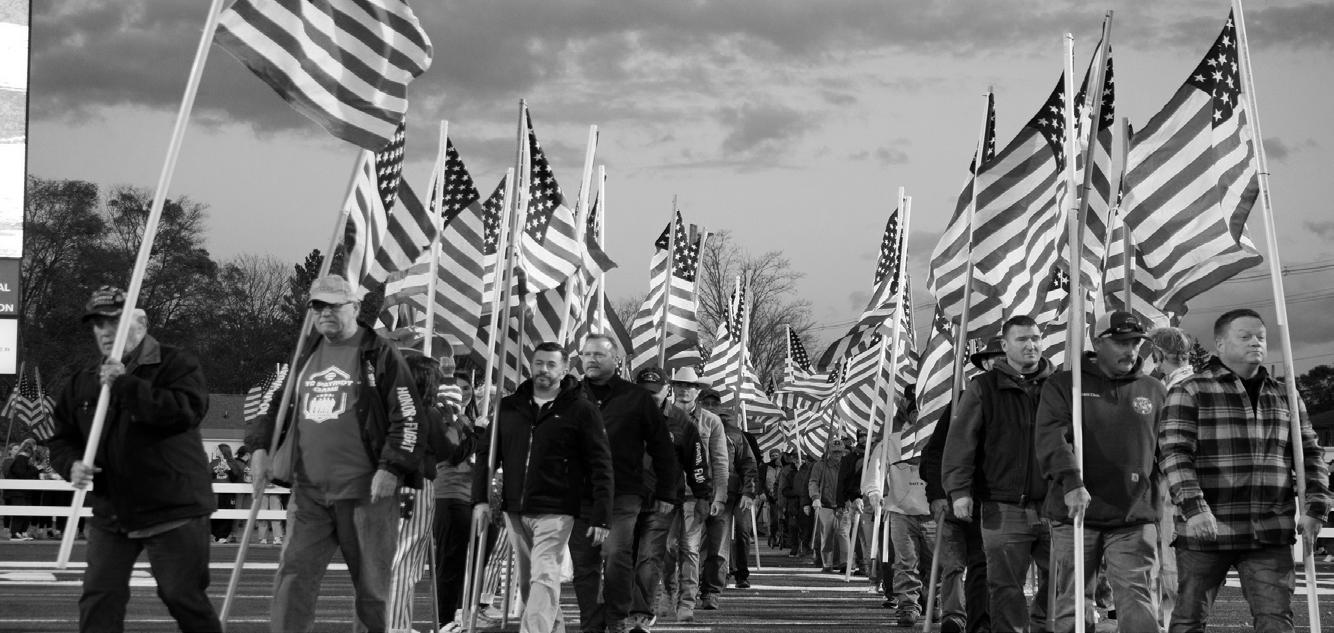
the case.” Mangan fought in Iraq because he wanted to live through a war. During his time, he fought around the areas of Al-Fallujah and the Iraq/Syria border. After he returned home, he continued to be impacted by his time in Iraq. “I remember coming back from Iraq swerving from potholes because we got blown up from them on a consistent basis,” he shares. But he did get many benefits for his service. The military provided health care and paid for his lasik, giving him perfect vision. He shared that growing up living in a single parent household and being immature in his youth, he likely would have dropped out of college due to lack of funds and not taking his education seriously. However, the military paid for his debt, and it gave him the discipline needed for college. He expressed that there is definitely a risk with being in the military, but overall, “I think it’s benefited greatly,” he notes.
The conflicts of the past have impacted many residents of the Traverse City community, including current TC West Middle School history teacher Patrick Mangan. A former US marine and Iraq war veteran, Mangan experienced fighting for his country firsthand: “Initially, when we went into Iraq, it was all [about] the WMDs, the weapons of mass destruction… it was pretty apparent early on that that wasn’t true. In fact, it was all fabricated as an excuse to go to war,” he admits. “So I don’t think anybody was under the illusion that that wasn’t
The conflicts before us have shaped everything we have and know. But these conflicts are not just stories to be bored of in class, but they are reminders that every positive and negative of history can happen again because history is circular in nature. Students of today must be prepared for whatever will happen next in our world because they will be the ones to decide what actions are taken. The next chapter of history will show if students today have learned from the past or will echo its horrors. //
Photo Courtesy of TCAPS
From Lakes to Laps
Teachers actually have a life outside of school, and three of Central’s own have pretty thrilling hobbies.
by Jade McGraw & Finn Kennedy // staff writers

Graphic by E. Hermel
Missi Yeomans
Central English teacher Missi Yeomans has been water skiing since the age of seven. Growing up surrounded by water, her grandparents' lake house was stocked with boats. Yeomans spent her childhood on the water, a place that would become her second home. She recalls the first time she ever tried water skiing, a moment she will never forget: “I got up on the first try, but it really startled me,” she says. “I just dropped the rope. And my grandma says, ‘You can do it again!’ My grandma was driving. She taught me how to ski. . . So I tried it and I just packed her right up. I mean, seven years old, just a little bobber out there in the world,” Yeomans recalls.
Since that fateful day, her love for water skiing has only grown. She feels incredibly fortunate to have been able to waterski for all of her life. When she was younger, she never feared getting hurt, often pushing herself to try more challenging stunts like barefoot water skiing. She laughs as she recounts one of her most memorable accidents. “I did barefoot waterskiing once. The farthest I got was probably fifty feet before I fell. . . You have to go really fast -about thirty, forty five miles an hour- because the water has to be really hard,” she explains. “When I fell, I felt like I was spinning and cartwheeling like I was rolling down Mt. Everest. It was just crazy. Down, down and down, my bathing suit fell all over the place. It was hilarious and so much fun.”
Water skiing has played many roles in her life. It has been intense, sometimes almost feeling like a competitive sport. At other times, it has been a peaceful experi-
ence, gliding across the water in complete calm. “It just feels like you’re flying. You’ve got the feeling of the water on your body, and the sensorial sound of the ski on the water when it's really calm,” she reminisces.
For Ms. Yeomans, water skiing is more than a sport. “When you do something that long with people that you love, it becomes more than just a hobby; it becomes a part of who you are,” she reflects. “I just feel really fortunate to be out there on the water and have been doing it with friends and family.” It’s a continuous passion that has shaped her life, providing both challenge and comfort, both danger and safety. Water skiing, in her words, has become the place where she truly feels alive. //

Photo M. Yeomans

Brett Derr
Sailing is more than just a leisurely activity for some. Central’s own Brett Derr, growing up in Wyoming, spent his summers living on a boat in upstate New York, where he discovered his passion for sailing.
"We had two months each summer on the water," he recalls. "Even though I grew up on the plains, those summers shaped my love for sailing.”
For Derr, his passion is a combination of science and history. "Sailing is more than just a skill. It's a way to connect with the world," he says. “It’s like hiking, but on water.” His love for sailing goes beyond just the surface level; it's about learning how humans have always interacted with the sea. While he dreams of sailing to places like Fiji or the Greek Islands, he actually loves the water that surrounds him. "This is some of the best sailing in the world," he reveals, where freshwater conditions make for perfect days on the water.
One of the things Derr enjoys most about sailing is the never-ending learning and unpredictability. “Every day is different,” he says, adding that the most rewarding part is the steady teamwork between sailor and boat. “It’s you and nature working together—without you, the boat’s just a piece of wood.”
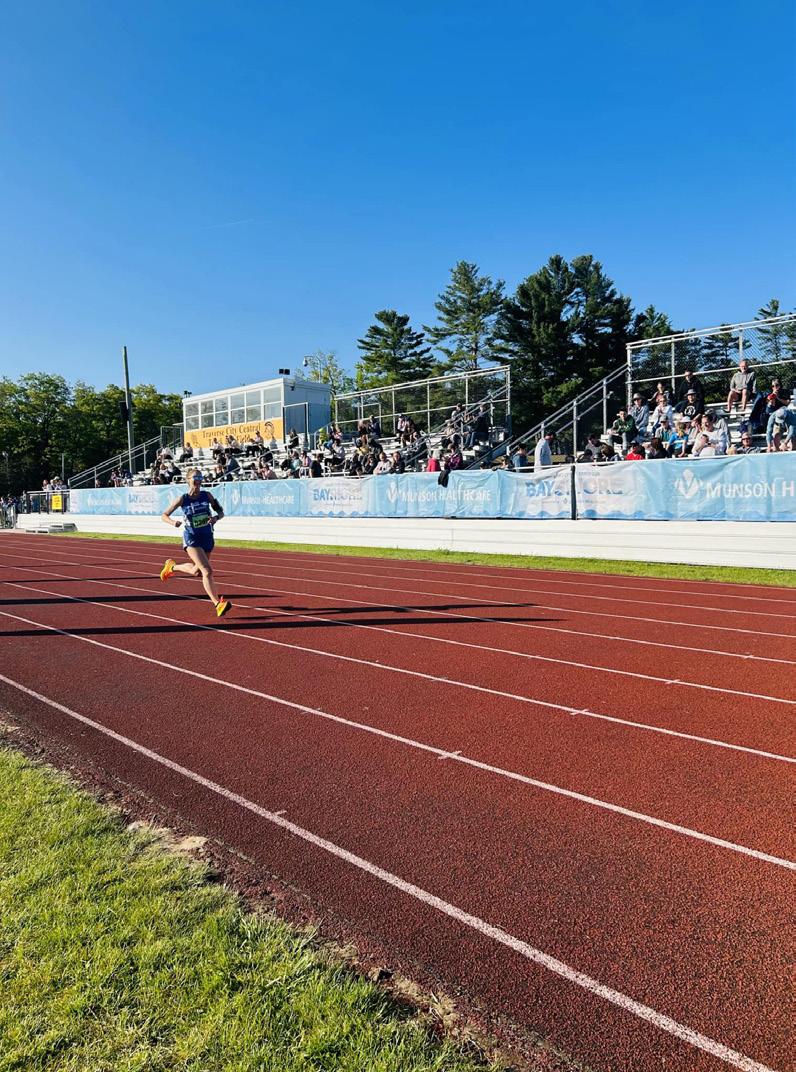
In the off-season, the majority of the work becomes maintenance and preparing for the next season. He takes pride in keeping his 1962 classic racer in top shape, doing everything from woodwork to crew management. "The winter is about getting ready for next season," he says, emphasizing the importance of preparation for the short but intense sailing season. Looking back on his journey from deckhand to captain, he's proud of his growth not just as a sailor but as a business owner. "I started at the bottom," he shares, explaining how he’s learned from each step along the way. Today, he runs a company and shares his passion for sailing while preserving a piece of maritime history. His boat, a classic yacht with a rich history, is a key part of his business. Derr has even performed marriage ceremonies onboard, officiating the wedding of our very own English teacher Kathryn Polus this past summer.
"It’s like being part of something bigger than yourself," he says, knowing he's just one of the many people who is a part of the boat’s legacy. For him, sharing this history with passengers and giving them a chance to disconnect and make memories on the water is the real joy. //
Photo B. Derr
Photo J. Grant
Jami Grant
Running can seem like a grueling sport to some, and a lot of us believe that personal bests peak in high school or college. Running is more than a required activity or meaningless sport: It's a journey. One person who proves what running can become is our very own French teacher, Madame Jami Grant. When she watched her father complete the Cherry Festival 15K in Traverse City at the age of five, it left a lasting impression. “I remember thinking, ‘Wow, what an endeavor,’” she says. At eleven, she ran the same race as her father for the first time, and from that moment on, running became a huge part of her life. Over the years, she continued to run the Cherry Festival 15k annually, even through the challenges of her teaching, her schedule, and the abrupt pause caused by the COVID-19 pandemic.
Like so many athletes, her journey wasn't without its setbacks and challenges. In high school, she switched to basketball but quickly returned back to running.“I knew that my skills were stronger in running,” she explains. But her path to success wasn't easy. Injuries, like frequent stress fractures, became a steady battle during her college years. She found support and inspiration in an incredible coach at Hope College, whose encouragement kept her going even when she almost quit. She even once told her coach, “I think I’m done with this,” but her coach’s guidance helped her push through her tough times. Despite her injuries and challenges, her continued perseverance paid off.
In adulthood, she continues to run some of the best performances of her life. “Last year, at 44, I was running my best times… That doesn’t usually happen for people," she acknowledges. Grant could have never achieved this if she didn’t have such a strong commitment to running. For her, running be-
came less about chasing records and glory, but about enjoying the simple things — putting in the work, seeing improvement, and feeling the joy of a job well done after a long hard workout. One of her most memorable accomplishments is competing in the Boston Marathon, although her first three attempts didn’t go to plan. But during her fourth time running the marathon, everything just came together perfectly. “It just was like everything fit together,” she says, “and I enjoyed every moment of it.” It was an accomplishment that made her proud of her perseverance and her promise to herself to never give up.
Grant even coached cross-country at Central High School, where one of her most treasured memories was leading her team to a state championship in 2008. “It was incredible to be a part of those girls’ lives,” she shares. Now, as a mother, she has shifted to the role of a cheerleader for her children, encouraging and supporting them in their own running goals and pursuits. “I love being a part of their journey,” she says, even though her role of involvement has shifted into one of support from the sidelines.
While Grant has to juggle a busy schedule - running, teaching, kids, and responsibilities - she still finds ways to fit running into her day. “My alarm goes off at 4:30 a.m.,” she laughs. She explains that morning runs became the only consistent time for her to get out on the roads and put in a hard workout before the rest of the day. As she continues to run and coach, she remains an inspiration to others, proving that running is not just a youthful, spur of the moment pursuit, but a lifelong passion. Whether it's racing in marathons, coaching high school athletes, or cheering on her own children, running has given her the tools to live a fulfilling, active life. //
The Black and Gold
The Black and Gold Quarterly (BGQ) and the Yearbook have fiercely worked their reputations as Central’s journalism clubs, pressing through pressured deadlines, confusing ideas, lack of prompts, and brilliant schemes and breakthroughs. While the Yearbook has arguably become the most widely sold, the BGQ pumps out content more frequently at four issues per year. Each group is led by a team of editors, accompanied by an adviser, to construct a fully functioning informative work of literature describing the TCAPS community, its sports and academic teams, people, and their achievements. While their rivalry in journalism might sound like it would be intense, they balance both a generous rivalry and high respect for each other’s skills, as explained below by advisors Gina Houdek (Yearbook) and Susan Roskelley (BGQ), who maintain a tight friendship outside of school.
What is something you look forward to about this class?
There’s a lot of room for creativity, and you just get to learn so much about the community as well as the staffers. We are a really close-knit group, and we are constantly laughing and coming up with inside jokes. Not a day goes by in BGQ that I don’t laugh about something at least once. I’ve also found that of my previous students, the ones I had in BGQ are the ones I stay in contact with most.
What do you do day to day?
Most days are pretty independent. The EICs are usually working on design and layout or pitching ideas to me, while the content editors and staffers are interviewing, transcribing, or writing. We have deadlines for when to get work done, but it’s very unstructured because everyone is usually in different places. Most days are pretty quiet because everyone is ‘locked in,’ but we do have a lot of fun and laughter during the creation process.
I think a lot of our students start off the year [being] pretty timid. There’s some nerves [and] anxiety, and by encouraging them to seek out interviews or conduct ad sales, it helps them grow and mature and polish those speaking and listening skills. I feel fortunate to work in such a creative setting with a smaller group of students who have such a close bond.
[During] the first few weeks, we do a lot of team building. It's not just a class, it's a family, so we really want to boost student morale and help students get to know one another. Following that, we’ll spend the first part of class drilling interview skills, caption writing, headlines, design techniques. And then…they have freedom to chip away at their pages and go out and seek out interviews and get their work done.
The Yearbook
What other responsibilities do members have?
We have certain editors, but when a student is given a spread assignment, they are solely responsible for capturing memories that will last a lifetime, for recording history. And I think that there is a huge moral and ethical responsibility in making sure that we're adequately covering an activity. We're trying to be diverse in the activities that we're including [and] that no student is left out. We make it a huge priority to try to ensure that we are fairly representing as much of the school as possible.
by MORGAN HILL // Editor
This year we have just over 20 students. At the start of the class, we spend the first few weeks going over basic journalism skills, and then students have a lot of independence to work at their own pace, and they’re required to go out and photograph different events that we’d like to feature in the yearbook. They need to interview students, [and] we do a lot of work with quality caption writing and pulling direct quotes. It starts off as a little more structured and then the second part, about a month or two in, students really get to experience more freedom and creativity.
What does your class ranking/structure look like?
Our class is primarily self-led, but spearheaded by an editor-in-chief that oversees the entire magazine production. Just like with Yearbook, we have two editors in chief this year. They design the layout, help come up with story concepts, and offer guidance to our content editors, who oversee the articles created by a small group of staffers as well as their own.
At the start of the class, we spend the first few weeks going over basic journalism skills, and then students have a lot of independence to work at their own pace, and they’re required to go out and photograph different events that we’d like to feature in the yearbook. We do a lot of work with quality caption writing and pulling direct quotes. It starts off as a little more structured and then…about a month or two in, students really get to experience more freedom and creativity.
Awakening in the Word
Graphic by E. Hermel
Traverse City Central is currently home to two Christian-driven clubs. Fellowship of Christian Athletes (FCA) is typically for athletes who chase the desire to play sports and follow their faith, meet every other Thursday for 30 minutes before school. On the flipside, the Awaken Bible Study gathers every Friday before school to learn about the word of Jesus, open to anyone who would like to get involved. These Christian clubs hold different goals with similar mindsets and hope to accomplish the same mission: to bring more people to the feet of Jesus.
FCA originated in the spring of 1954 and has been a staple at Central for decades. Each huddle covers differing topics as well as engaging in community events and activities. Joshua Sprunger, an FCA huddle leader for Buckley High School as well as the board chairman for the Northwest Michigan region, explains how the main goal of this organization is “... to use athletes as a platform to promote the name of Jesus. We wanna see every athlete and every coach in a growing relationship with Jesus Christ and his church.” At Central, FCA huddles consist of food, a great message, and social bonding that allows each person to grow in their relationship with Jesus. Jen Yost, the area director for Northwest Michigan between Big
Rapids and Sault Ste. Marie explains, “We're in over 100 countries all across the world, which is pretty powerful to know that this is really a worldwide organization.” FCA isn’t limited to just high schools, however. Carter Banton ‘25, an FCA member, as well as a leader of the Awaken Bible Study, adds that “schools all over the world and most D1 and D2 colleges [have an] FCA.”
Besides their meetings and fellowship, FCA prays to lead more athletes toward Christ. “Our hope with FCA is that students can…become confident in their faith and what they know,” Yost explains. “It also helps them to be part of a community of like minded believers where they can meet people who are in the same area of life that they are [so] they can grow.” Central alumna Rebekah Cotton ‘18 has recently become re-involved in FCA, but as a representative for all Traverse City area chapters. She hopes that ath-
Central and its fellow Christians come together to share the word of Jesus in more ways than one.
by Kailyn Groves // Editor
letes will use this opportunity in FCA to be representatives of Christ on and off the field. “Receiving Christ as our Lord and Savior changes everything, so I encourage athletes to seek Him into every moment and use the gifts they have been given to share His name because there is so much joy when we do that,” she remarks.
Although FCA is catered specifically for student athletes, there is now another opportunity for all Central students to find a Christ-centered community at Central. In October of 2023, the Awaken Bible Study was born. Caden Kowal ‘24, as well as Luke Grosart ‘24 and Mitchell Millard ‘26, met through Young Life, a local youth group organization, and were inspired to start a study to Central based on feedback from other Young Life attendees. “They were planning a Bible study at school, and I [said], I'll help,” Bible Study leader Caleb By-
land ‘26 mentions. Every Friday morning at 7:25, Christians within Central get together to start out their day. “We're super inviting,” Saydi Kiley ‘26 states. “We want everybody to come. It doesn't matter what kind of lifestyle you have.” From providing donuts and snacks to educating students with Scripture, they create a community within school that allow other Christians to connect. Many leaders and students a part of this club all have mentioned they love the community and gathering it provides. “It's changed a lot of people I know, because it's brought people who aren't strong Christians, or not even Christians at all, to a place where they can get comfortable and start to grow that faith,” Kiley explains.
Both FCA and the Bible study hope “...to bring Jesus to our school and allow God to work through us to bring that to as many people as possible,” Banton explains. Having clubs like these will encourage students to get involved and open a new door or chapter in their life. “I hope it can give people a sense of community,” Kiley remarks. “Sometimes it's hard for kids to find a group or a youth group to go to with sports and [after-school activities]...I think it's helpful, and I hope it can help people.” //
More Than Just Bingo Games
The increase in senior living facilities in Traverse City hasn’t been without it challenges
By Myah McCotter and Avaya Williams // Staff Writers
Retirement homes have been a long running business for many years. The founder of assisted living homes, Dr. Karen Wilson, opened the first assisted living facility in Oregon during 1981. Many families have a hard time deciding on which retirement homes their grandparents or parents should go to for the best care and services. Cordia Grand Traverse Commons and Villa at Traverse Point are two of many retirement homes in the Traverse City area. They both have great aspects, between the environment, staffing, and residents, but they both also have faced a lot of challenges.
Not many people know that there’s different types of living facilities for seniors. There’s Assisted Living, “where you still maintain some independence, but you might need help with day to day tasks like cooking or cleaning or just needing someone around or medication,” says Human Resources director Alyssa Hansen. There’s also independent living, where you don't depend on someone and don’t need 24/7 help and you can take care of yourself.
In 2014, Cordia at the Grand Traverse Commons opened. Ronessa Butler, the director of business at Cordia, is primarily in charge of billing, payable, technology, and many of the operational things that happen around the building. In her time at Cordia, she has seen firsthand the issues that plague
senior living facilities. Many people had a rough time during Covid, causing staffing issues across the board, especially at Cordia. “We know that there is a wide demand for staff in this region, especially for the types of jobs we’re having here such as servers down in are dining area or personal care attendants or wellness assistants, so it has been really hard to find [staff] historically,” Butler explains, “and the way we solved it was by increasing our wages and by making sure that were a business that you want to work for that is supportive and flexible and really supports the employees.” At Cordia, they have three different floor plans to pick from: studios, one bedroom, or two bedroom private apartments, which are found on two different levels. They offer both assisted living and some independent living. It really just matters how much it will cost for your room and board, and if you have any additional caretaking or other services on top, the rent will cost more. Depending on the facility, “Some are quite medical, but for us we try to keep it as home base as possible so that everyone has their own private residence, basically an apartment, and that any care that they get is done inside their residence and sometimes health agencies,” Butler remarks. “So I think it can be quite medical, but otherwise it really is just folks who can't safely or consistently live indepen-

dently who just need actual help.”
There’s pluses and minuses to having these communities for seniors, though. For a lot of the residents, it can be lonely when they don't have family members visiting, “so it feels like they’re not able to provide that socialization that they wish they could as much as they would if you had family members staying with you or whatnot,” says Hansen. But there are some positives about retirement homes. “I think they provide that sense of community for the residents,” Hansen elaborates. “It allows them to participate in activities and get that family sense whereas they might not get that in a hospital environment or a home environment.” Lots of people have bad perceptions on retirement homes facilities, and in the future, the homes in our area hope to change those negative views. “I think there’s a large negative perception out there, so just getting the community to understand that they are necessary and they do provide that homelike environment [is important],” Hansen comments. There is also much more that the retirement homes can improve on, such as the food. “[It’s] terrible, [and] has no taste. I understand the fact that certain people can't eat certain things. Some of it is ok, but for the most part I don’t like it.” according to Linda Johnson, an
aide at the Villa.
Johnson has been in the Villa for eight years, both working on staff and being a resident there. “ If I could do it in that wheelchair, I would still do it because I loved it that much,” expresses Johnson. Even though Johnson faced her own struggles and no longer is on staff, she still finds that the team is amazing. “We have a great staff now. When I was working here, it wasn't, and when I came here it wasn't, but it's a lot better now. We have a good crew here. If you need them, they’re right there,” shares Johnson. The staff truly care about all the residents like family and the residents feel safe there.
Retirement homes are a big part of our community. They help our seniors, our grandparents, and other family members. “Retirement homes can get a bad rap. But as far as our facility, I feel that we are still holding up pretty high with our census,” remarks Hansen. //

Photo Courtesy Cordia
Photo Courtesy Cordia
Chocolate Mint Cookies
By eliana Hermel // Co-editor in Chief
ingredients:
¾ cup butter
1 ½ cups brown sugar
2 tablespoons water
2 cups semisweet chocolate chips
2 eggs
2 ½ cups all-purpose flour
1 ¼ teaspoons baking soda
½ teaspoon salt

A few bags of Andes Mints (or something similar)
reCipe:
1.) In a saucepan over medium heat, cook the sugar, butter and water, stirring occasionally until melted. Remove from heat, stir in entire bag of chocolate chips until melted. Set aside to cool for 10 minutes.

Photo Courtesy E. Hermel
Photo Courtesy E. Hermel
2.) Pour the chocolate mixture into a large bowl, and beat in the eggs, one at a time. Combine the flour, baking soda and salt, stir into the chocolate mixture. Cover and refrigerate dough for at least 1 hour.
3.) Preheat oven to 350 degrees F (175 degrees C). Grease cookie sheets. Roll cookie dough into 1½ to 2½ sized balls and place 2 inches apart onto the prepared cookie sheets.


4.) Bake for 8 to 10 minutes in the preheated oven. Be careful not to overbake, unless you want them a bit crunchier. While they may not look done, they will solidify more as they cool, so trust the process. When cookies come out of the oven, Press one mint wafer into the top of each cookie and let sit for 1 minute. When the mint is softened, swirl with the back of a spoon or toothpick to cover the cookie more. For smaller cookies, break mints in half.
5.) Let the cookies cool and then enjoy!

Photo Courtesy E. Hermel
Photo Courtesy E. Hermel
Photo Courtesy E. Hermel
The Crossword
By Parker Ziegler // Staff Writer
